Lifestyle
#05 Helium Leak Detector

ULVAC Group is a unique corporate group that provides a wide range of comprehensive vacuum technologies, including vacuum systems, vacuum equipment, materials, analytical equipment, and customer solutions, for various industries.
However, you might wonder, "What is the wide range of vacuum technologies?" or "Where in various industries is the vacuum technology used? "
You might be surprised to know that vacuum technology hides in various places around us.
Did you know that vacuum technology is also used in home air-conditioner (Ductless Mini-Split System Air Conditioners), essential to our daily lives throughout the year?
3 Things You May Not Know "Helium Leak Detection"
As we have mentioned, there are two methods for leak test: one using liquid, and the other using gases such as air or specific search gases. We have found that the leak test using gas can detect smaller leaks than the leak test using liquid.
Helium gas, hydrogen gas, halogen gas, and ammonia gas are the main gases used in leak tests using gases. Among them, we found that helium gas is safe and highly sensitively to inspect the leakage.
An analyzer called a "Helium Leak Detector," which can detect the helium gas leak highly sensitively is required for a helium leak test. The Helium Leak Detector is used to identify the amount and location of the leakage.
Helium Leak Detector
What is the helium leak detector?
The diagram below is its exterior and structure.
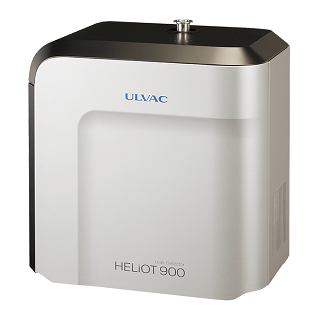 |
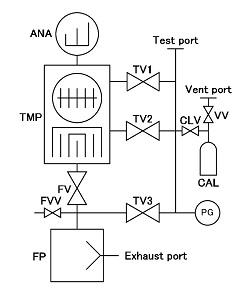 |
The helium leak detector is actually a vacuum device.
When helium gas flows in through the test port (connection port of the analyzer), the analyzer detects the helium gas. This analyzer is a magnetic field deflection mass spectrometer, and its inside is evacuated. A vacuum pump (turbomolecular pump, oil rotary vacuum pump, or dry vacuum pump) is used to create a vacuum inside the analyzer.
The magnetic field deflection mass spectrometer principle is that the ion source ionizes all the gases entering the analyzer, and the magnetic field deflector selects only helium ions from the ionized gases. Then the selected helium ions are sent to the ion collector. The ion collector measures the helium ions as an electric current. In other words, the amount of helium gases is measured as an electric current.
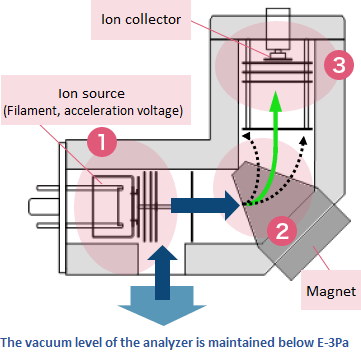
Click here to learn more about the principle and structure of the helium leak detector.
Helium Leak Detectors are Used in Various Situations.
Household air conditioners, automobile air conditioners, household refrigerators, and other equipment using refrigerants use the helium leak detector to conduct the helium leak test.
The helium leak test using the helium leak detector is used in a wide range of applications and industries, from fire extinguishers, food products, and electronic components to aircraft and satellites.
Inspection level by Industry
The helium leak detector measures the amount of helium as an electric current. However, since the current value is not clear as a leakage amount, the leakage amount is expressed in units of Pa・m3/sec. In our industry, we say this unit "Pascal cubic meter per second." This means the gas amount (absolute pressure (Pa: pascal) x volume (m3)) that moves per unit time (sec: second). Since the leakage to be detected is very small, it is generally expressed in E (Exponentiation) representing a power (Example: a × a × a = a3). The inspection levels by industry based on this notation are as follows:
Inspection level by industry (standard)
| Leakage amount Q [Pa・m3/sec] |
E-3 〜 E-5 | E-5 〜 E-7 | E-9 〜 E-10 | E-11 〜 E-12 |
|
Object to be inspected |
Water pipe Gas pipe |
Air conditioner |
vacuum component |
Nuclear power-related products Space-related products |
Lifestyle
-

Protect nutrients by preventing oxidation with a vacuum chilled
-
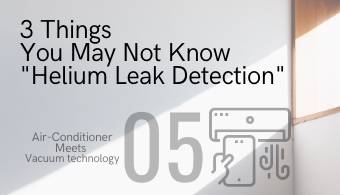
#05 Helium Leak Detector
-
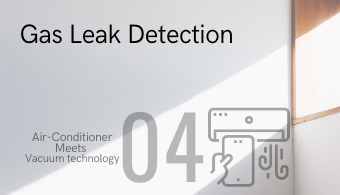
#04 Gas Leak Detection Methods
-
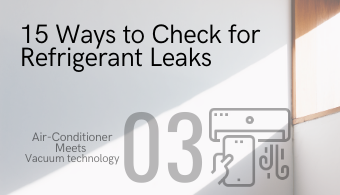
#03 Classification of Leak Detection Methods
-

Built-in small diaphragm pump for tasty and long-hour storage
-
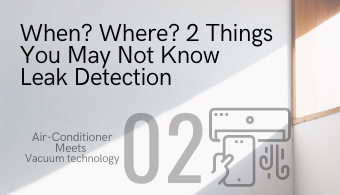
#02 The Importance of Refrigerant Leak Detection
-

#01 How The Air Conditioner Works
Solution
- Big Science
- Lifestyle
- Technology
- Medical Field